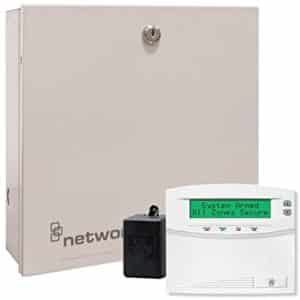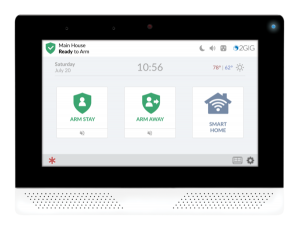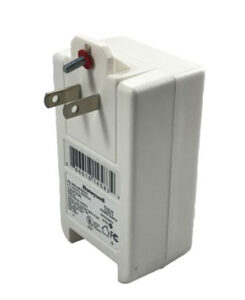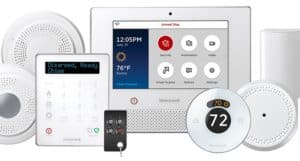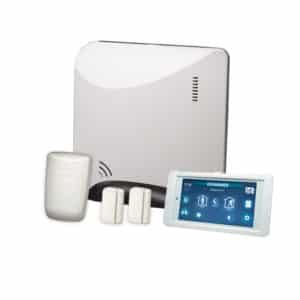Author Archives: Tim
How SafeHomeCentral.com Helps Home and Business Owners Slash Their Alarm Monitoring Costs
How SafeHomeCentral.com Helps Home and Business Owners Slash Their Alarm Monitoring Costs In today’s economy, [...]
Oct
Affordable No-Contract Alarm.com Monitoring in Puerto Rico
Affordable No-Contract Alarm.com Monitoring in Puerto Rico Security is essential for homeowners and businesses across [...]
Oct
Alarm.com and SafeHomeCentral.com: The Perfect Pairing for Modern Security
Alarm.com and SafeHomeCentral.com: The Perfect Pairing for Modern Security In today’s connected world, homeowners and [...]
Oct
Surety vs SafeHomeCentral.com for Alarm.com Monitoring: Which is Best?
Surety vs SafeHomeCentral.com for Alarm.com Monitoring: Which is Best? Introduction When it comes to protecting [...]
Oct
Why It’s Smart to Switch from Brinks Alarm Monitoring to SafeHomeCentral.com
Why It’s Smart to Switch from Brinks Alarm Monitoring to SafeHomeCentral.com Home security is non-negotiable—but [...]
Oct
Why SafeHomeCentral.com is the Best Choice for 2GIG Alarm System Monitoring
Why SafeHomeCentral.com is the Best Choice for 2GIG Alarm System Monitoring Introduction to 2GIG Alarm [...]
Oct
Get Online Fast With Contract-Free Alarm Monitoring — SafeHomeCentral.com Makes It Happen in About an Hour
Get Online Fast With Contract-Free Alarm Monitoring — SafeHomeCentral.com Makes It Happen in About an [...]
Oct
25+ Ways to Lower Your Home Insurance Premium — and Why a Monitored Alarm from SafeHomeCentral.com Is the Smartest Move You Can Make
25+ Ways to Lower Your Home Insurance Premium — and Why a Monitored Alarm from [...]
Oct
How SafeHomeCentral.com Can Meet Your Insurance Company’s Requirement for Central Station Monitored Burglary and Fire Protection
How SafeHomeCentral.com Can Meet Your Insurance Company’s Requirement for Central Station Monitored Burglary and Fire [...]
Oct
How to Meet Homeowner Insurance Requirements for a Monitored Burglary & Fire System
How to Meet Homeowner Insurance Requirements for a Monitored Burglary & Fire System When your [...]
Oct
Cut Your Alarm.com Monitoring Bill Significantly With SafeHomeCentral.com — No Contracts, Same UL-Certified Protection
Cut Your Alarm.com Monitoring Bill Significantly With SafeHomeCentral.com — No Contracts, Same UL-Certified Protection If [...]
Oct
Affordable No-Contract Alarm Monitoring for Canadians — Starting at Just $8.95
Affordable No-Contract Alarm Monitoring for Canadians — Starting at Just $8.95 Homeowners and business owners [...]
Oct
SafeHomeCentral.com vs Brinks vs ADT vs Guardian: Best Alarm Monitoring Service Compared (2025 Review)
SafeHomeCentral.com vs Brinks vs ADT vs Guardian: Best Alarm Monitoring Service Compared (2025 Review) 1. [...]
Oct
Honeywell Alarm System Monitoring—Half the Price, Zero Contracts, and 7-Day Support from SafeHomeCentral.com
Honeywell Alarm System Monitoring—Half the Price, Zero Contracts, and 7-Day Support from SafeHomeCentral.com If you [...]
Oct
The Top 3 Wireless Alarm Systems for 2025: Qolsys IQ4, 2GIG Edge & Resideo ProA7Plus
The Top 3 Wireless Alarm Systems for 2025: Qolsys IQ4, 2GIG Edge & Resideo ProA7Plus In [...]
Oct
Why SafeHomeCentral.com Is the Best Choice for Landline Alarm Monitoring
Why SafeHomeCentral.com Is the Best Choice for Landline Alarm Monitoring Introduction to Landline Alarm Monitoring [...]
Oct
Affordable Alarm Monitoring for Fixed-Income Households: Why SafeHomeCentral.com is the Best Choice
Affordable Alarm Monitoring for Fixed-Income Households: Why SafeHomeCentral.com is the Best Choice Introduction: Security Without [...]
Oct
How to Save Money on Landline Connected Alarm System Monitoring
How to Save Money on Landline Connected Alarm System Monitoring Introduction to Landline Alarm System [...]
Oct
SafeHomeCentral.com Can Save You Money on Alarm Monitoring — Especially In A Bad Economy
SafeHomeCentral.com Can Save You Money on Alarm Monitoring — Especially In A Bad Economy In [...]
Oct
Why SafeHomeCentral.com is the Smart Choice for Affordable, No-Contract Alarm Monitoring in Canada
Why SafeHomeCentral.com is the Smart Choice for Affordable, No-Contract Alarm Monitoring in Canada If you’re [...]
Oct
Comparing the Top Alarm System Mobile Apps: Alarm.com, Total Connect 2.0, Alula, and Napco Prima
Comparing the Top Alarm System Mobile Apps: Alarm.com, Total Connect 2.0, Alula, and Napco Prima [...]
Mar
DIY vs. Professional Installation: Do You Really Need the Big Names for Home Security Systems?
DIY vs. Professional Installation: Do You Really Need the Big Names for Home Security Systems? [...]
Mar
Alula and SafeHomeCentral.com – The Best Choice For Alarm Monitoring
Alula Communicators for Hardwired Alarm Systems and Why SafeHomeCentral.com is the Best Choice for Alula [...]
Feb
Adding Wireless Sensors To An Interlogix NetworX Panel
Adding wireless sensors to an Interlogix NetworX series DSC panel is not difficult assuming you [...]
Feb
Honeywell Lyric DIY Home Security and Automation System Review – 2021
The Lyric DIY Home Security and Automation System from Honeywell is their most advanced all-in-one [...]
Jan
Hooking Up My Honeywell Dual-Path LTE-iA or LTE-iV Communicator
Hooking up your new Honeywell dual-path Ethernet and 4G LTE communicator to your Honeywell Vista [...]
Sep
Nextalarm Ending Alarm Monitoring Service June 30, 2020
The Problem With the upcoming termination of Internet based alarm monitoring with nextalarm existing customers [...]
3 Comments
May
Home Security System Alarm Monitoring Basics
Your home is your castle as they say. It’s where you go to escape and [...]
Feb
Alula Connect+ DIY Home Security and Automation System Review – 2019
While Alula is a new name on the professional security market it results from the [...]
Apr
Understanding Home Security – Alarm System Configurations
Home Security System Configurations This article focuses on how you may want to tailor your [...]
Mar
Understanding DIY Home Security Systems – Part 1
Thinking about installing your own Home Security System with maybe Home Automation as well? With [...]
Mar
Understanding Honeywell Advanced Protection Logic (APL)
APL or Advanced Protection Logic was introduced with LYNX Touch as a way to combat “smashing” [...]
Mar
DIY Home Security Systems – Are They Any Good?
If you are searching for a DIY home security solution to protect your family and [...]
Mar
Are Today’s Wireless Home Security Systems Secure?
As alarm dealers and DIY homeowners move away from hardwired alarm systems its natural to [...]
Aug
Exactly What’s the Difference Between Burglary and Robbery?
The words robbery and burglary are frequently utilized interchangeably in motion pictures, TV shows, books [...]
Dec
Don’t Complicate Things, Get a DIY Home Security System and Save Money
Security is something we need to have, not only in our jobs and our finances, [...]
Aug





















